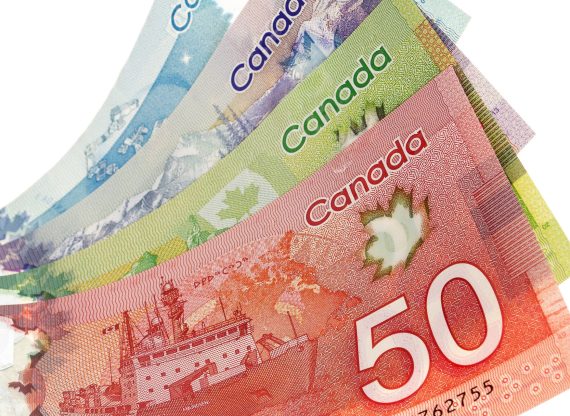Into strong winds, the central bank stays the course

The Bank of Canada’s decision to increase the policy interest rate by 0.5 percentage points, up to 1%, was necessary in the current context.
The soaring inflation that is hitting the Canadian economy full force, reaching 5.7% in February, must be reined in, and this action from the central bank should help.
However, the Bank of Canada (BoC) is not the only institution to have an impact on inflation; the federal government, going on a spending spree with taxpayers’ money, is also a key culprit. Right now, we have the central bank trying, by raising rates, to plug the inflationary holes in the boat, but the federal government is busy poking new ones in the hull with its colossal spending. Meanwhile, there’s no one at the helm making good decisions for the country’s economy.
Repercussions for Canadian families
The first to suffer from rising prices for things like food and transportation are clearly Canadian families.
With less and less money left in their pockets after paying the bills each month, they should see this interest rate hike as good news, with the potential to slow the soaring prices that hit the middle class and less well-off particularly hard. But the government also needs to take this situation seriously and take an interest in the effects of monetary policy, which has repercussions for the entire population, whatever the prime minister may think.
It must be acknowledged, of course, that the BoC’s rate hike will have repercussions on variable rate mortgages, and also on new mortgages and renewals, and that, in turn, will have an impact on homeowners.
This effect, however, should be offset by the downward pressure on inflation. Canadians will, unfortunately, have to tighten their belts for the time being, but this is largely due to the federal government’s continued profligate spending.
The government must change direction
What’s more, the federal debt, which was already gigantic, is now over $1.26 trillion. This will have to be repaid, and higher interest rates — based on the central bank’s rate increase — will certainly be felt in the wallets of Canadian taxpayers.
Just servicing this debt — paying the interest on it — will cost nearly $43 billion for the 2026-27 fiscal year, according to the budget tabled last week. That’s $16 billion more than this year.
Concretely, assuming the same number of taxpayers as in 2021, this works out to a burden of some $1,476 per taxpayer for that single year — just to cover the interest on the federal debt!
This by itself should be enough to convince the government to rein in spending, because this debt that it keeps inflating will cost Canadians a lot of hard-earned cash in the coming years.
For the central bank’s rate increase to have the hoped-for effects, the government has to get its spending habit under control.
It needs to set out a path to a balanced budget, something that was noticeably absent from last week’s budget. The deeper in debt society tumbles, the more painful the repercussions of the BoC’s policy rate hikes.
We, therefore, need to address the endless public spending; it’s the only way, in the current situation, to serve the needs of current and future Canadians.
The rising cost of living has pushed the central bank to act, and it has acted wisely, raising the policy interest rate. Now the federal government has to act.
Reining in Canadians’ mounting public debt is an absolute must for those captaining the ship of state.
It’s time to plug the holes and set a course for a balanced budget.
Gabriel Giguère est analyste en politiques publiques à l’IEDM et Olivier Rancourt est économiste à l’IEDM. Ils signent ce texte à titre personnel.

